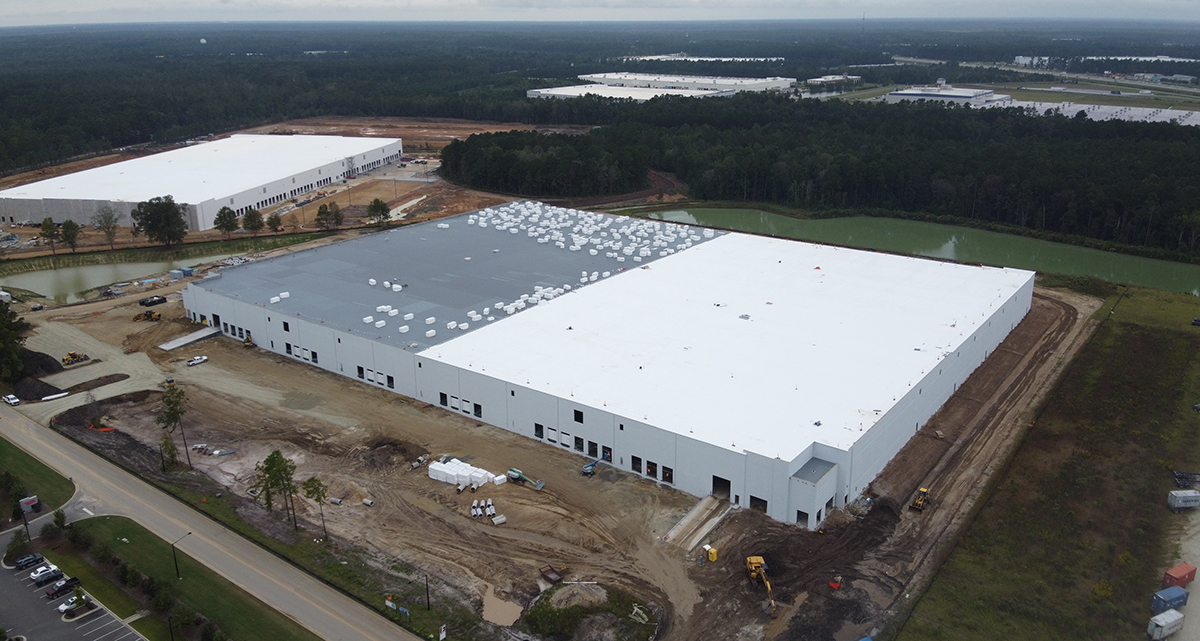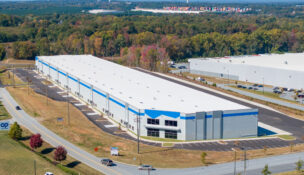Capacity drives flow of furniture to Charleston
Staff //November 22, 2021//
 Years ago, when Micah Mallace walked through a warehouse at holiday time, he watched as container after container arrived filled with hover boards — a popular self-balancing scooter that burst onto the scene that holiday.
Years ago, when Micah Mallace walked through a warehouse at holiday time, he watched as container after container arrived filled with hover boards — a popular self-balancing scooter that burst onto the scene that holiday.
Retailers were preparing for an inundation of orders.
“What predicts the next explosive thing, I think, 100% is our buying habits. We’re a consumption-driven economy,” the senior vice president of marketing and sales for the S.C. Ports Authority said.
For much of the pandemic, retail goods have been on the rise as consumers, hesitant of traveling and venturing out of the house, shopped online for a flow of tangible items shipped to their doors in brown, carboard boxes.
But it seems shopping habits also have accelerated the sector of furniture and home furnishings as the fastest-growing commodity in Charleston and the country.
Year-over year, the U.S. has experienced a 50% increase in furniture imports, with Charleston rising 55%, according to Port Import/Export Reporting Service data.
“What we’re seeing is amazing,” Mallace said. “Furniture volumes into Charleston and then into the U.S. were on a tear pre-pandemic. They were already going like crazy. And then the pandemic accelerated that beyond our wildest dreams.”
The exploding market has forced companies to rethink where they set up production, with limited space available to relocate. By 2025, warehouse demands are projected to be upward of 330 million square feet to keep up with e-commerce growth.
Historically, decisions have been based on the bottom dollar, centered on where should a company locate to make the most of its money, Mallace said.
“Today, cost is secondary. This is probably the first time we’ve seen in 30 years when capacity is primary,” he said, adding that retailers are questioning: Where is port capacity? Where is labor capacity? Can distributors still have access to their goods if they relocate and ship them out with ease?
Mallace said the SCPA checks all those boxes with added cargo capacity at the Hugh K. Leatherman Terminal, skilled labor, predictability and efficiency.
Mallace said it’s no coincidence that two large furniture retailers just snatched up warehouse space in the same location in the Charleston region, at the same time — and before construction on the complex is completed.
Twin Star Home, an omnichannel designer and manufacturer of indoor and outdoor living products, and Sagebrook Home, a California-based home décor company, are the final tenants for the Charleston Trade Center in Summerville.
Construction is scheduled to wrap in December at Red Bay Road.
Twin Star Home will occupy the largest space, taking up more than 1 million square feet, while Sagebrook Home will establish its first East Coast distribution center in a neighboring 430,000-square-foot building.
The Trade Center is a joint venture between Singerman Real Estate and The Keith Corp., the project developers. JLL Managing Director Lee Allen and Executive Vice President Kevin Coats are handling marketing and leasing efforts for the campus on behalf of the developer.
“These furniture distribution centers build on Charleston’s centrality to the furniture and home goods segment,” SCPA President and CEO Jim Newsome said. “The Keith Corp. and Singerman Real Estate’s successful development of the Charleston Trade Center, combined with JLL swiftly filling the industrial park with tenants, is symbolic of the sustained growth in the Charleston market.”
TKC and SRE broke ground on the Charleston Trade Center in 2016, and have since put $205 million into the project and created more than 1,000 jobs.
“We had confidence in the macro trends we’d been hearing about for quite a while, from the Panama Canal expansion to the port deepening and all of the port’s various investments,” Allen said. “Obviously there’s a lot of growth in the Southeast and nationally. Industrial is as hot as it’s ever been. But it’s still a big investment, and we’re thrilled about the outcome.”
The project, which totals 230 acres, is 73% larger than the second-biggest speculative building in the Charleston area, Allen said.
He always intended the 1-million-square foot building to be leased to one tenant, but what kind of business that might be was a huge unknown. In the end, there were more interested parties than space, offering JLL the ability to pick the right tenants.
Twin Star and Sagebrook were both ready to move fast.
“If anyone’s gone on the internet and tried to order furniture, they know how long the backlog is,” Allen said. “So you see an industry that has supply challenges during the pandemic and both tenants knew they needed the space, wanted to make a commitment and did what it took to get the deal done expeditiously.”
The already strong Lowcountry market has only moved faster this year, Allen added. Large transactions that used to take six to 12 months to complete are now reduced to three to six months.
Bigger is better, too, when it comes to space demands, Mallace said. He’s seeing a variety of industrial real estate developers looking at Charleston to build more 1 million-foot speculative buildings. He credits Keith Corp and JLL for taking a risk that others weren’t ready to take — and being successful.
“Others would not have had the confidence to do that had somebody not blazed the trail before them…,” Mallace said. “The opportunity out there, the square-footage required have grown exponentially in just a few short years, and so our market, in order to remain healthy, needed somebody to prove that thesis.”
e

















